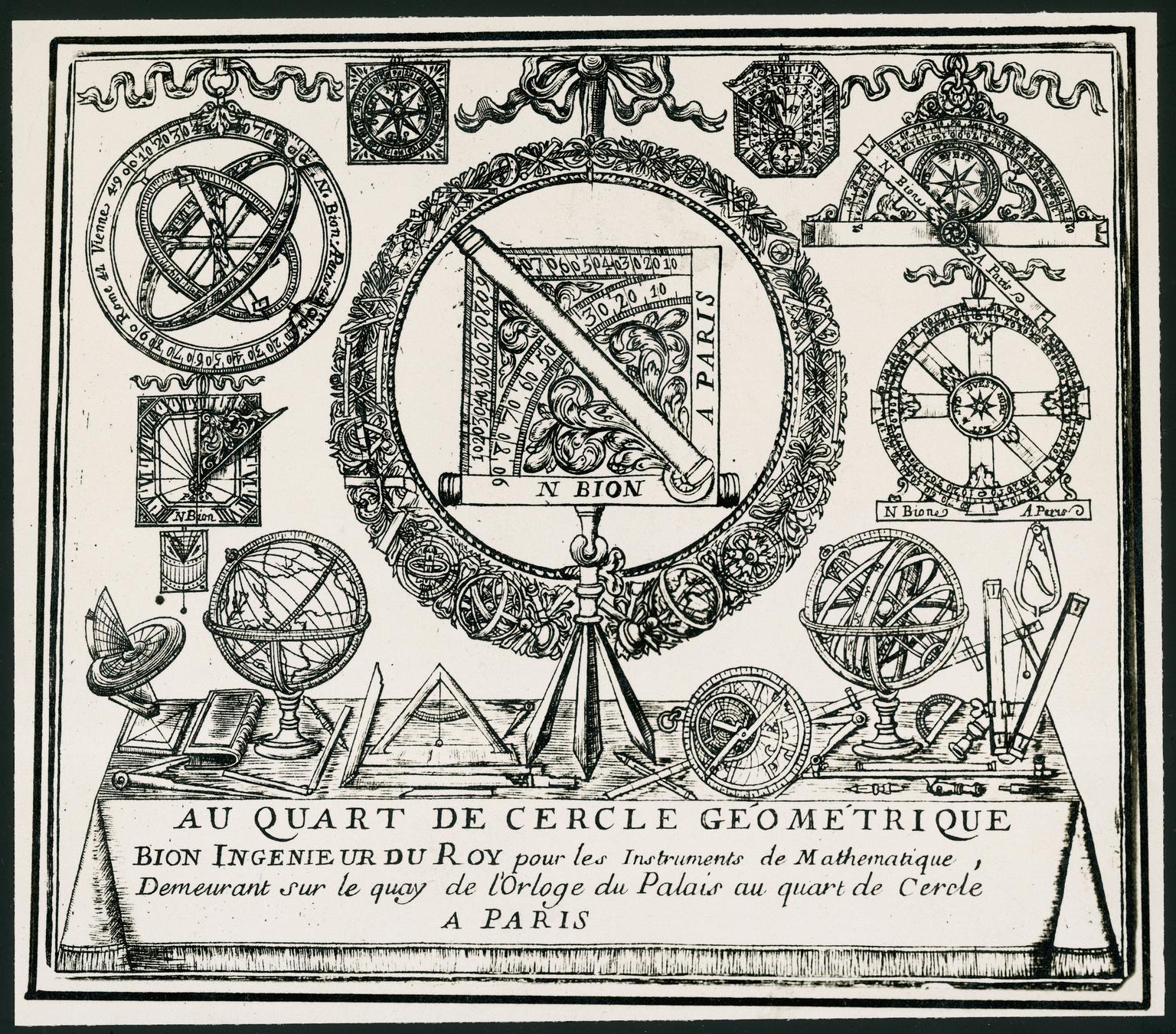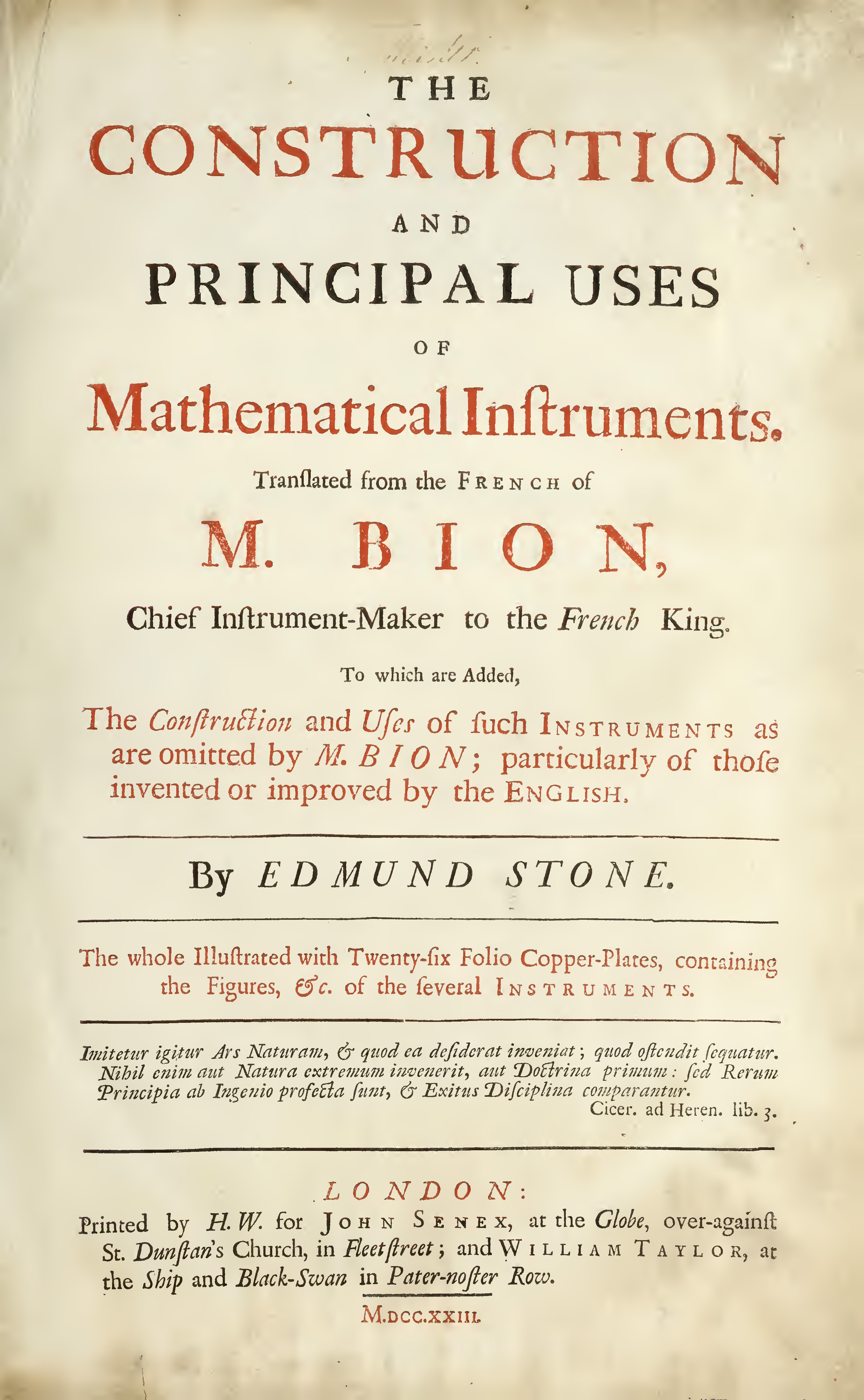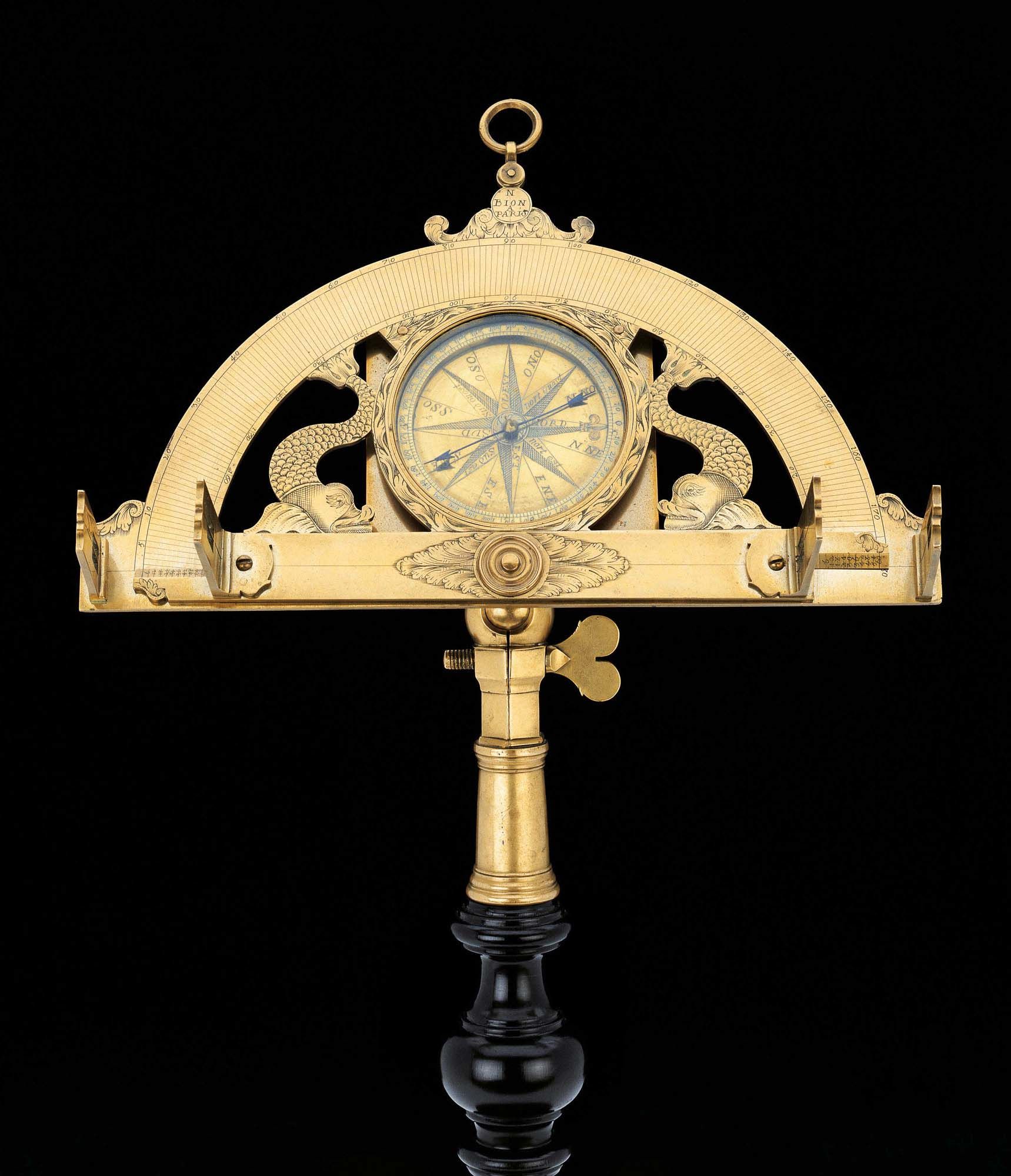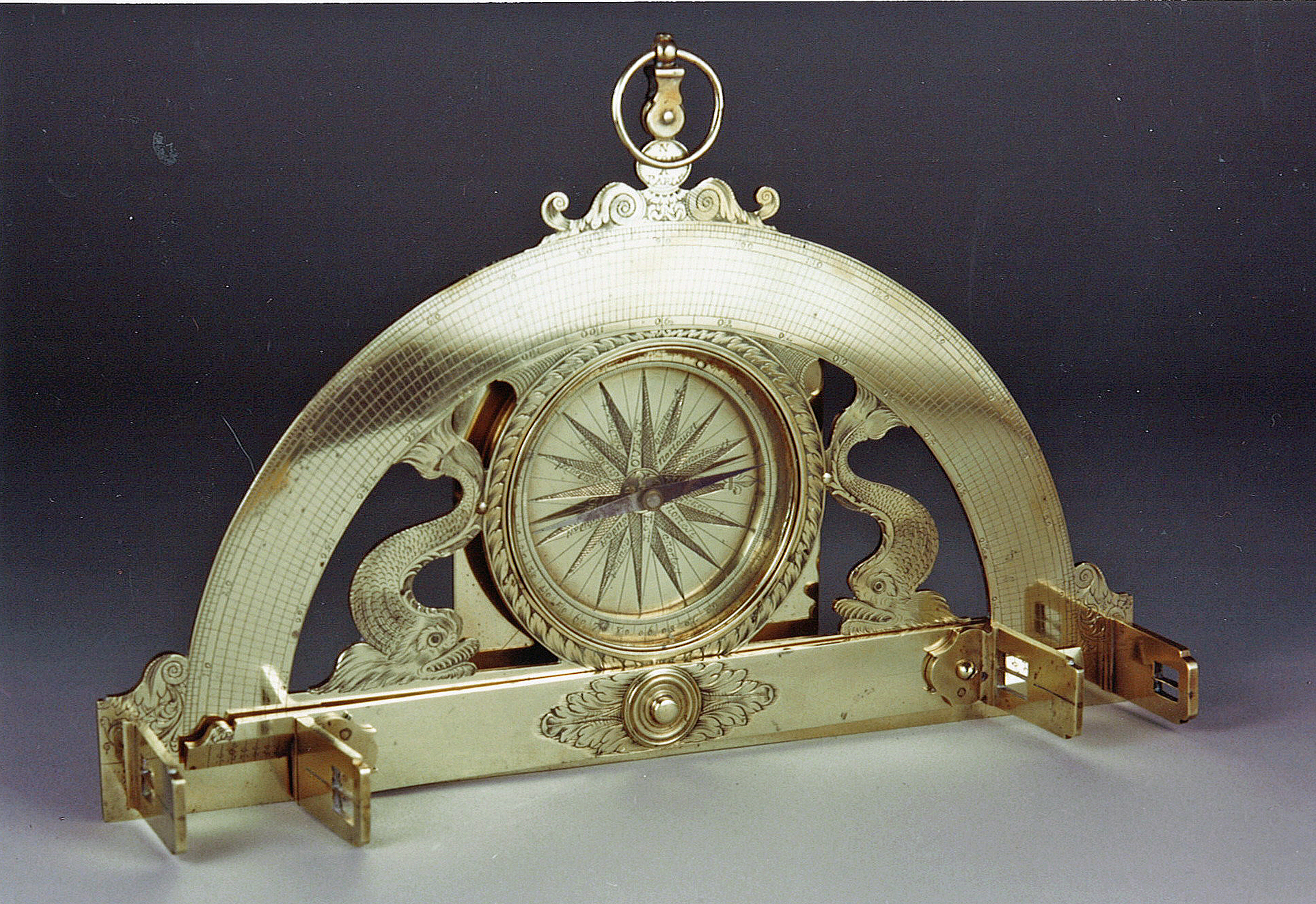
Nicolas Bion
Bion married in 1678 at the age of 26, and is mentioned as a maker from 1681 onwards. One of the best known makers of the late 17th and early 18th century, Bion was juré of the Founders’ Corporation from 1700-1702 and again from 1714-16. I
His workshop was located on the Quai de l’Horloge in Paris, at the sign of the Quart de Cercle or of the Soleil d’or. This last sign may have been simply that of his printer-bookseller, Boudot. Louis XIV (1638-1715) appointed Bion royal maker of mathematical instruments..
Unlike his cocompetitors, Bion published several works, and they as well as his instruments were probably responsible for his fame. Two pamphlets concern a sphere and globes executed for the dauphin and a celestial planisphere constructed to reflect the most recent observations made by the members of the Académie des Sciences. He also published three important treatises on globes and cosmography, on astrolabes, and on precision instruments in general. These writings had great success and went into many editions, the most recent of which were printed under the supervision of Bion’s son after his father’s death.
The Traité de la construction … des instruments mathématiques gives a fairly complete list of instruments normally constructed during the first quarter of the eighteenth century. It should, however, be noted that some of the instruments described by Bion—such as astrolabes, marine astrolabes, the jacob staff, and the Davis quadrant—were no longer used. There are deficiencies also in the descriptions of eyeglasses, microscopes, and micrometers. Bion apparently did not wish to have his instruments copied by others. All of his treatises were more for the user and the amateur than for the manufacturer.
In the composition of his books Bion was not generous in acknowledging his sources. According to Houzeau & Lancaster he incorporated Courtin's Traité de cosmographie into his work without indication, and Pierre Polinière accused him of outright plagiarism. In May 1726 Polinière deposed a plee against Bion to the effect that he had taken the liberty of pillaging the book [the 1718 edition of Polinière's Expériences de physique] in numerous places. He provides a detailed list of passages of up to an entire page, and of illustrations, thus illegally copied, complete with the mistakes which had escaped him. By way of redress, Polinière demanded the suppression of Bion's offending books, 1500 livres fine plus expenses. The affair was settled out of court, Bion admitting the charges and promising to remove the offending passages in any future editions of his works and to desist from the practice. Although Polinière dropped the charges, he nonetheless published an account of the case. According to Lalande, La Hire was supposed to have had a large part in the writing of Bion’s treatise on instruments.
Edmund Stone translated The Traité de la construction … des instruments mathématiques into English in 1723, with the addition of some English instruments. Packed with information and plates showing numerous instruments, this book is one you should have in your library, either in hardcopy or digital form. See Stones 1723 Title Page below.
There is an excellent 2014 article about Bion posted on the Jstor website - You can access the article for free here (you must register with Jstor however).


© 2020 Russ Uzes/Contact Me



